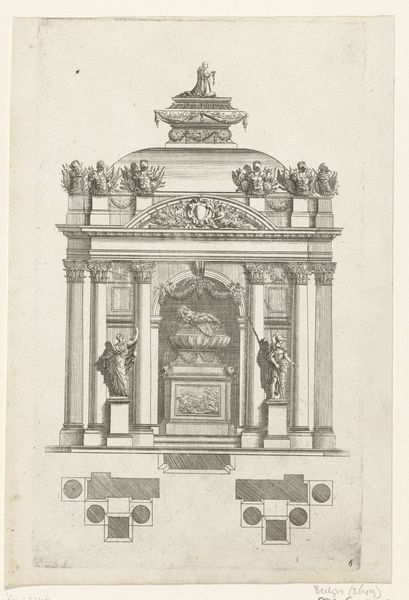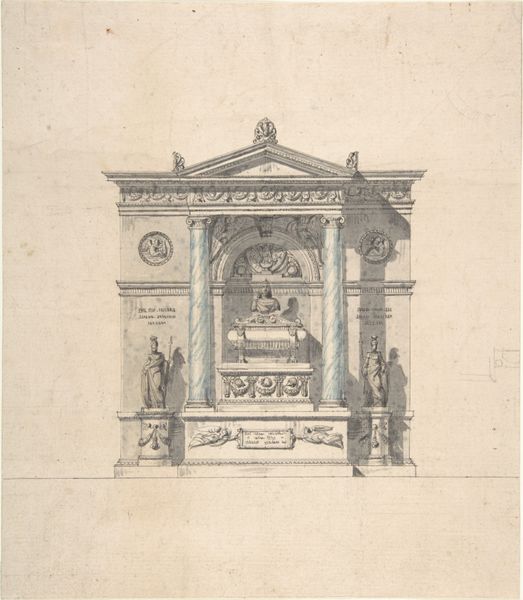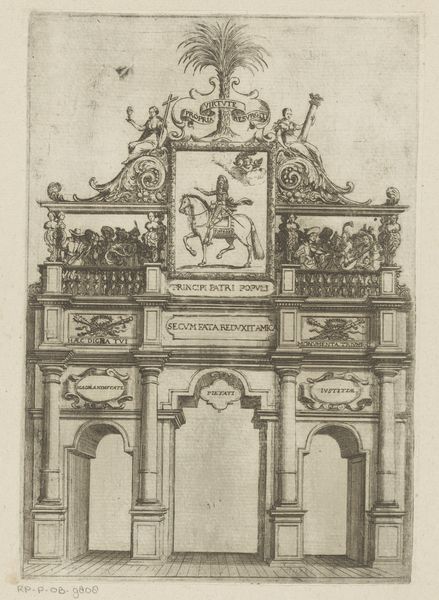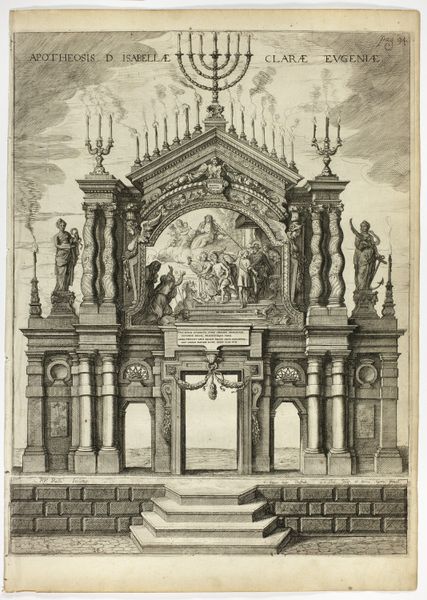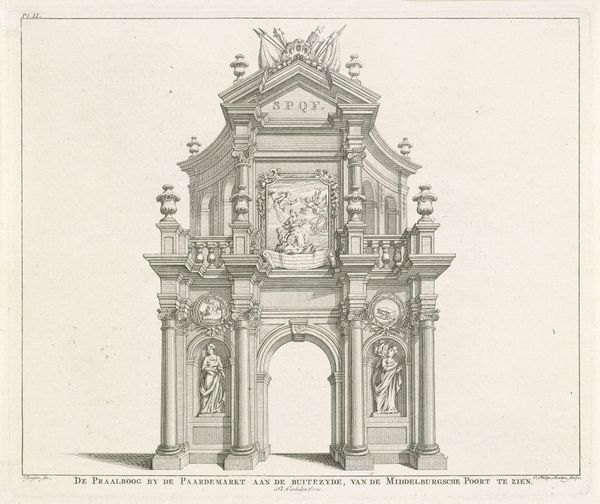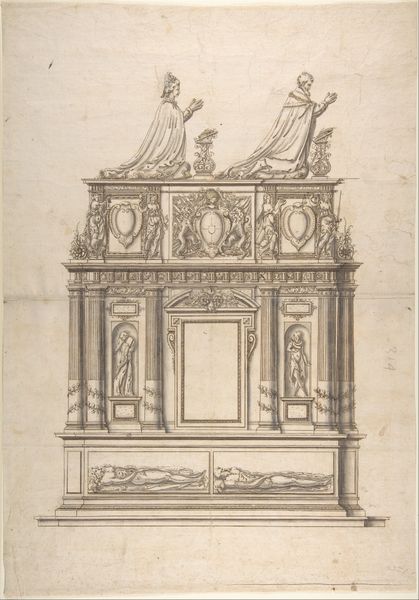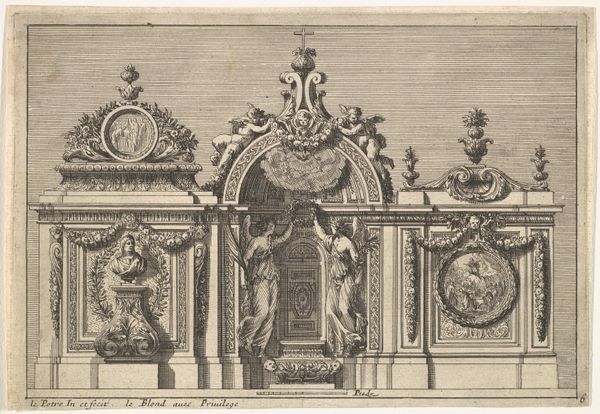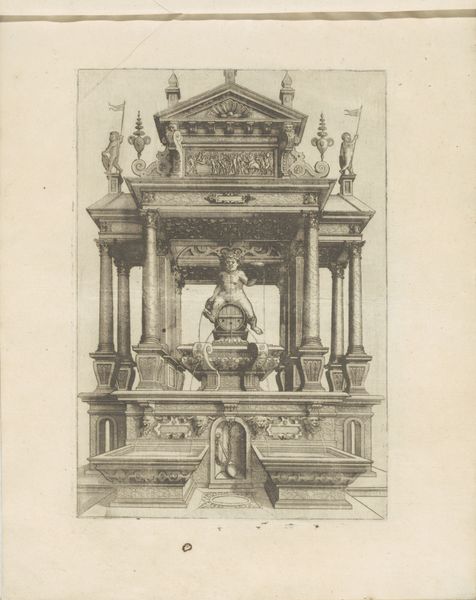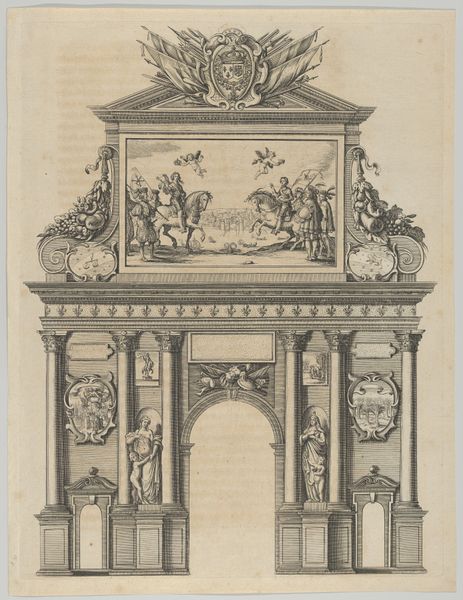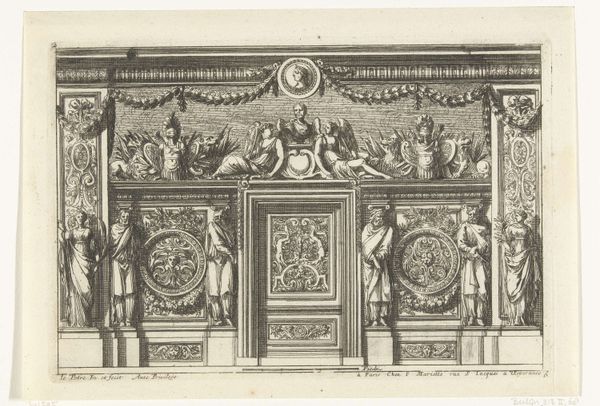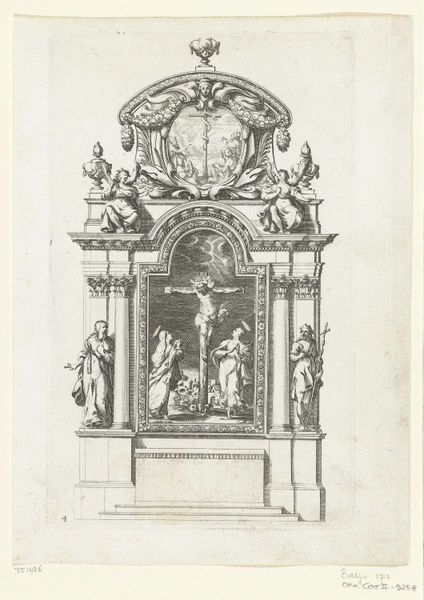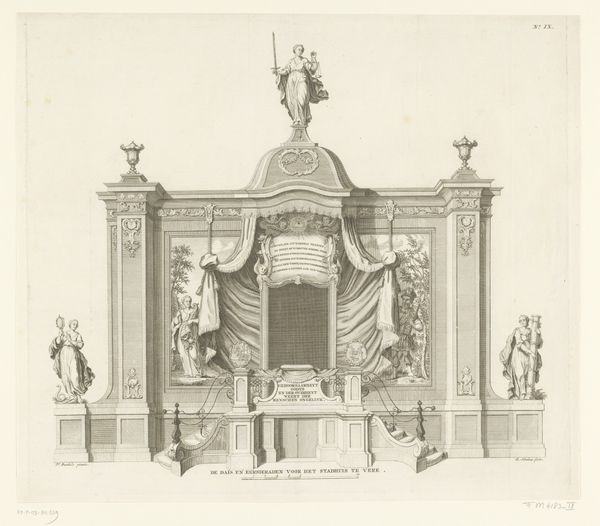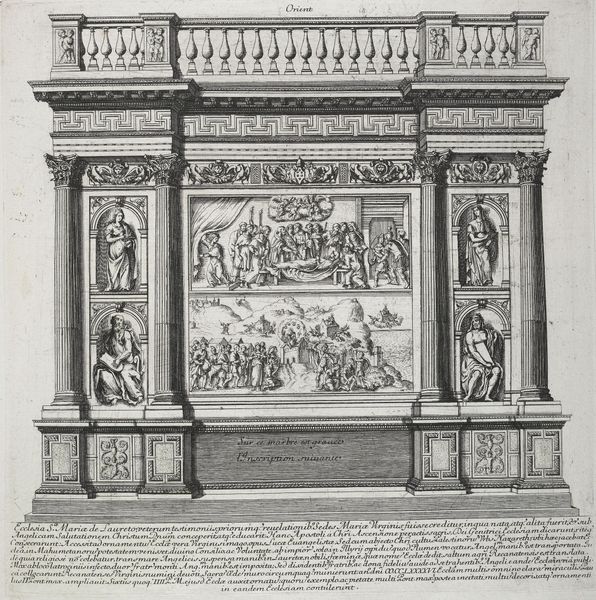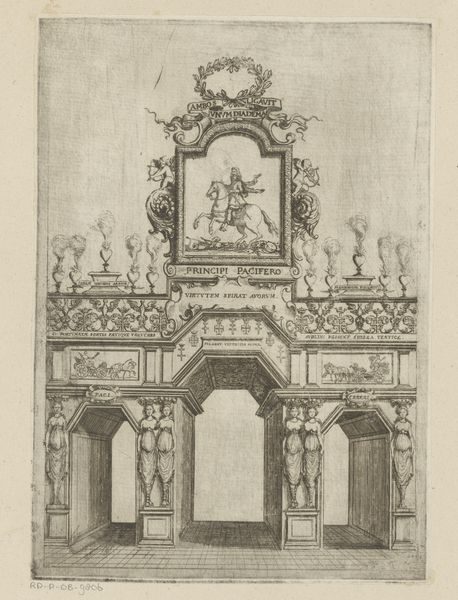
Façade of a triumphal monument with three scenes depicting deeds of Pope Clement VIII, a temporary decoration for the entry of Pope Clement VIII in Bologna in 1598 1598
0:00
0:00
drawing, print, engraving
#
drawing
#
narrative-art
# print
#
line
#
history-painting
#
italian-renaissance
#
engraving
Dimensions: Sheet (Trimmed): 7 7/8 × 10 3/8 in. (20 × 26.4 cm)
Copyright: Public Domain
Curator: This engraving captures a temporary triumphal monument erected in Bologna in 1598 for Pope Clement VIII’s entry. Guido Reni, though early in his career, meticulously rendered the scene. The print medium itself mirrors the monument's ephemeral nature. Editor: My initial sense is of elaborate pageantry and controlled chaos, the sheer density of figures and architectural elements feels both grand and overwhelming. The texture implied by the line work gives it a somewhat dreamlike quality. Curator: The print functions as a historical document, recording a performance of power. We can analyze this entry procession through the lens of intersectionality: How did different social groups experience and participate in this event? Were marginalized communities represented or excluded from this carefully constructed narrative? Editor: Precisely! And considering it’s an engraving, think about the workshop production, the labor involved in creating numerous copies for dissemination. How did the material process shape the message being conveyed? Did the relatively accessible format influence the scope of Clement's political reach? Curator: The scenes depicted showcase deeds attributed to Pope Clement VIII. These narratives constructed a specific image of the papacy and reinforce its authority. Considering that it’s temporary architecture—how does the print itself work to immortalize what was not intended to last? Editor: Good point. Temporary structures often require quick assembly using available materials and the labor readily on hand. What can that tell us about Bolognese craftsmanship at the time, the kind of collaboration such a massive undertaking involved? Curator: The visual rhetoric of this monument relies heavily on classical motifs—columns, statues, and triumphal arches – appropriating past empires to legitimize papal power. It serves as propaganda aimed at conveying ideological messages. This resonates with questions of cultural appropriation and the instrumentalization of history. Editor: And to consider Reni himself – a young artist on the rise. He's not just replicating; he’s translating architecture into a new medium. Examining his materials, the lines he chose, tells us much about how an event is transformed and thus understood over time. Curator: Absolutely, thinking about temporality, labor, and visual strategies allows us to dig deep into the social and political conditions. Editor: Yes, considering both the grand performance and the material processes give us richer insights into this period.
Comments
No comments
Be the first to comment and join the conversation on the ultimate creative platform.
